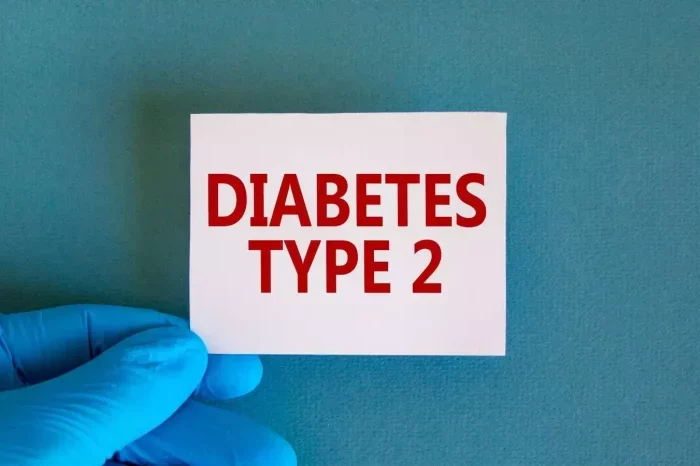Blood glucose monitoring is a critical component of diabetes management. For individuals with diabetes, maintaining blood glucose levels within a target range is essential for preventing complications and ensuring overall health. But what exactly constitutes a “good” glucose level in a blood test? This article will explore the various factors that influence blood glucose levels, the different types of glucose tests, and the optimal ranges for blood glucose in both fasting and postprandial (after eating) states.
Understanding Blood Glucose and Its Importance
Blood glucose, also known as blood sugar, refers to the amount of glucose present in the bloodstream. Glucose is the primary source of energy for the body’s cells and is derived from the food we eat, particularly carbohydrates. After consuming a meal, carbohydrates are broken down into glucose, which enters the bloodstream. The hormone insulin, produced by the pancreas, facilitates the uptake of glucose into cells for energy or storage.
For individuals with diabetes, the body either does not produce enough insulin (type 1 diabetes) or cannot effectively use the insulin it produces (type 2 diabetes). This leads to elevated blood glucose levels, known as hyperglycemia. Chronic hyperglycemia can cause damage to various organs and systems, including the eyes, kidneys, nerves, and cardiovascular system. Therefore, maintaining blood glucose levels within a target range is crucial for preventing diabetes-related complications.
Types of Blood Glucose Tests
There are several types of blood glucose tests used to monitor and manage diabetes. Each test provides different information about blood glucose levels and helps guide treatment decisions. The most common types of blood glucose tests include:
Fasting Blood Glucose Test
The fasting blood glucose test measures blood sugar levels after an individual has not eaten for at least 8 hours. This test is typically performed in the morning before breakfast and is commonly used to diagnose diabetes or prediabetes.
Postprandial Blood Glucose Test
The postprandial blood glucose test measures blood sugar levels 2 hours after eating a meal. This test helps assess how well the body processes glucose after food intake and is useful for evaluating the effectiveness of diabetes treatment.
Random Blood Glucose Test
The random blood glucose test measures blood sugar levels at any time of the day, regardless of when the last meal was consumed. This test is often used in emergency situations or when symptoms of hyperglycemia or hypoglycemia are present.
Oral Glucose Tolerance Test (OGTT)
The oral glucose tolerance test measures blood sugar levels before and after consuming a glucose-rich beverage. This test is used to diagnose gestational diabetes, as well as to assess glucose tolerance in individuals with risk factors for type 2 diabetes.
Glycated Hemoglobin (HbA1c) Test
The HbA1c test measures the average blood glucose levels over the past 2 to 3 months. This test provides a long-term view of blood sugar control and is a key indicator of how well diabetes is being managed.
What Is a Good Glucose Level?
The definition of a “good” glucose level can vary depending on the context, such as whether the measurement is taken during fasting, after eating, or over a longer period. Additionally, target glucose levels may differ based on individual factors such as age, duration of diabetes, presence of comorbidities, and overall health. Here, we will discuss the optimal glucose levels for different types of blood glucose tests.
Fasting Blood Glucose Levels
The fasting blood glucose test is one of the most commonly used tests for diagnosing diabetes and assessing blood sugar control. For individuals without diabetes, a normal fasting blood glucose level typically falls within the range of 70 to 99 mg/dL (3.9 to 5.5 mmol/L).
Normal range: 70 to 99 mg/dL (3.9 to 5.5 mmol/L)
Prediabetes: 100 to 125 mg/dL (5.6 to 6.9 mmol/L)
Diabetes: 126 mg/dL (7.0 mmol/L) or higher on two separate tests
For individuals with diabetes, a “good” fasting blood glucose level is generally considered to be between 80 and 130 mg/dL (4.4 to 7.2 mmol/L). However, individual target ranges may vary based on factors such as age, health status, and treatment goals. It’s important for diabetics to work closely with their healthcare provider to determine their specific target range.
Postprandial Blood Glucose Levels
Postprandial blood glucose levels provide insight into how the body processes glucose after a meal. For individuals without diabetes, a normal postprandial blood glucose level is usually less than 140 mg/dL (7.8 mmol/L) two hours after eating.
Normal range: Less than 140 mg/dL (7.8 mmol/L)
Prediabetes: 140 to 199 mg/dL (7.8 to 11.0 mmol/L)
Diabetes: 200 mg/dL (11.1 mmol/L) or higher
For individuals with diabetes,a good postprandial blood glucose level is typically less than 180 mg/dL (10.0 mmol/L) two hours after a meal. However, some healthcare providers may recommend stricter targets, such as less than 160 mg/dL (8.9 mmol/L), depending on the individual’s overall health and risk of complications.
Random Blood Glucose Levels
Random blood glucose levels can vary widely throughout the day, depending on factors such as food intake, physical activity, and stress. For non-diabetics, a normal random blood glucose level is usually less than 140 mg/dL (7.8 mmol/L).
For individuals with diabetes, a good random blood glucose level is generally considered to be between 80 and 180 mg/dL (4.4 to 10.0 mmol/L), depending on the timing of the test relative to meals and the individual’s treatment plan.
Oral Glucose Tolerance Test Levels
The oral glucose tolerance test is used to assess how the body handles a large amount of glucose over a period of time. For non-diabetics, blood glucose levels should return to normal within 2 hours after consuming the glucose-rich beverage.
Fasting before test: Less than 100 mg/dL (5.6 mmol/L)
1 hour after glucose intake: Less than 180 mg/dL (10.0 mmol/L)
2 hours after glucose intake: Less than 140 mg/dL (7.8 mmol/L)
For individuals with prediabetes, blood glucose levels 2 hours after glucose intake will fall between 140 and 199 mg/dL (7.8 to 11.0 mmol/L). A level of 200 mg/dL (11.1 mmol/L) or higher indicates diabetes.
HbA1c Levels
The HbA1c test provides an overview of average blood glucose levels over the past 2 to 3 months. For non-diabetics, a normal HbA1c level is below 5.7%.
Normal range: Below 5.7%
Prediabetes: 5.7% to 6.4%
Diabetes: 6.5% or higher
For individuals with diabetes, a good HbA1c level is typically below 7.0%. However, some healthcare providers may recommend stricter targets, such as below 6.5%, for younger individuals or those with a shorter duration of diabetes. Conversely, older adults or those with multiple comorbidities may have a higher target, such as below 8.0%, to reduce the risk of hypoglycemia and other complications.
Factors Influencing Target Blood Glucose Levels
While the above ranges provide general guidelines for what constitutes a good blood glucose level, individual target ranges can vary based on several factors. These factors include:
Age
Older adults may have different target glucose levels compared to younger individuals. As people age, the risk of hypoglycemia increases, and the potential benefits of strict glucose control may be outweighed by the risks. Therefore, healthcare providers may set higher target ranges for older adults to minimize the risk of low blood sugar episodes.
Duration of Diabetes
Individuals who have had diabetes for many years may have different target glucose levels compared to those who are newly diagnosed. Long-standing diabetes can lead to changes in the body’s response to insulin and glucose, necessitating adjustments in target ranges to achieve optimal control.
Presence of Comorbidities
Individuals with diabetes often have other health conditions, such as cardiovascular disease, kidney disease, or neuropathy. The presence of these comorbidities can influence target glucose levels. For example, individuals with cardiovascular disease may benefit from stricter glucose control to reduce the risk of heart attacks or strokes.
Risk of Hypoglycemia
For individuals who are at high risk of hypoglycemia, such as those on insulin therapy or certain oral medications, target glucose levels may be set higher to reduce the risk of dangerously low blood sugar levels. Hypoglycemia can lead to symptoms such as dizziness, confusion, and even loss of consciousness, making it a critical consideration in diabetes management.
Pregnancy
Pregnant women with diabetes, including gestational diabetes, have specific target glucose levels to ensure the health of both the mother and the baby. Strict glucose control is essential during pregnancy to reduce the risk of complications such as preterm birth, macrosomia (large birth weight), and preeclampsia.
Personal Preferences and Lifestyle
Individual preferences and lifestyle factors, such as diet, physical activity, and daily routine, can also influence target glucose levels. Some individuals may prefer stricter control to minimize the risk of complications, while others may prioritize flexibility and quality of life. It’s important for individuals with diabetes to work closely with their healthcare provider to establish a target range that aligns with their goals and lifestyle.
The Role of Continuous Glucose Monitoring (CGM)
Continuous glucose monitoring (CGM) is an advanced technology that provides real-time information about blood glucose levels throughout the day and night. Unlike traditional fingerstick tests, which provide a snapshot of glucose levels at a specific point in time, CGM offers a continuous stream of data, allowing for more comprehensive glucose management.
CGM can be particularly useful for individuals who have difficulty maintaining stable blood glucose levels or who are at high risk of hypoglycemia. By providing insights into glucose trends and patterns, CGM helps individuals and their healthcare providers make more informed decisions about diet, exercise, and medication.
Benefits of CGM
Real-time glucose readings: CGM provides continuous updates on glucose levels, allowing for immediate adjustments to diet, activity, or medication.
Trend analysis: CGM tracks glucose trends over time, helping to identify patterns such as dawn phenomenon (early morning rise in blood sugar) or postprandial spikes.
Hypoglycemia alerts: CGM devices can be set to alert users when glucose levels are approaching dangerously low levels, helping to prevent severe hypoglycemia.
Limitations of CGM
Cost: CGM devices can be expensive, and not all insurance plans cover the cost.
Calibration: Some CGM devices require regular calibration with a traditional blood glucose meter to ensure accuracy.
User experience: Wearing a CGM sensor continuously may be uncomfortable for some individuals, and the data can be overwhelming without proper guidance from a healthcare provider.
See also: What is the Device Used to Check Blood Sugar?
Conclusion: Achieving Optimal Blood Glucose Control
Maintaining good blood glucose levels is a cornerstone of effective diabetes management. A “good” glucose level in a blood test varies depending on the type of test, individual factors, and overall health goals. For most individuals with diabetes, the target ranges for fasting, postprandial, and random blood glucose levels, as well as HbA1c levels, provide a framework for achieving optimal glucose control.
However, it’s important to recognize that diabetes management is not one-size-fits-all. Factors such as age, duration of diabetes, presence of comorbidities, risk of hypoglycemia, pregnancy, and personal preferences all play a role in determining individual target glucose levels. Continuous glucose monitoring offers a powerful tool for achieving tighter control and preventing complications.
Ultimately, the key to successful diabetes management is working closely with a healthcare provider to establish and maintain target glucose levels that support overall health and well-being. With the right approach, individuals with diabetes can achieve good glucose control and reduce the risk of long-term complications, leading to a better quality of life.
Related topics:
How Do Hospitals Measure Blood Glucose?

























